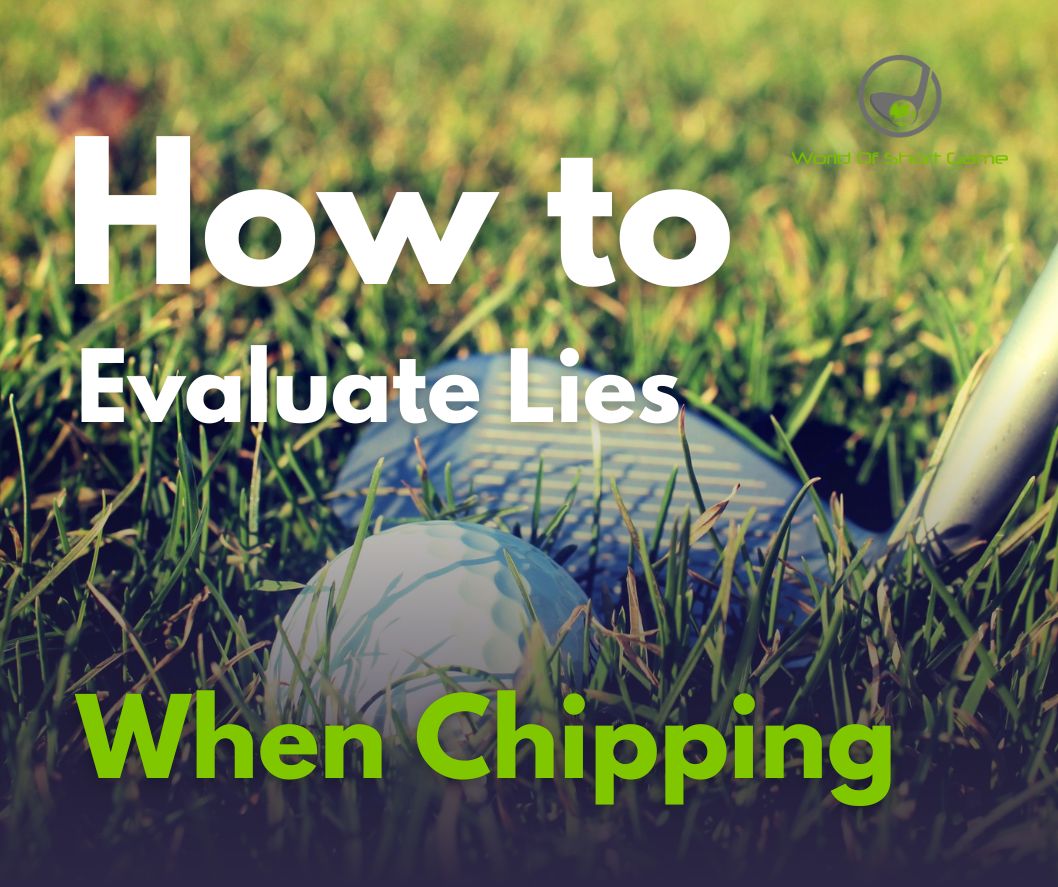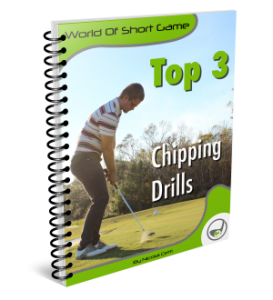- +4527976587
- mail@worldofshortgame.com

How to Evaluate Lies When Chipping

How to Evaluate Lies When Chipping
How to Evaluate Lies When Chipping: Key Questions and Adjustments
Evaluating the lie when chipping is one of the most important yet overlooked aspects of the short game. The way the ball sits in the grass drastically affects shot selection, trajectory, and distance. In this guide, we’ll explore how to evaluate lies when chipping and how to make necessary adjustments to your swing and club selection based on the conditions.
The Importance of Lie Evaluation
When chipping, many players focus only on technique and club selection without considering how the ball’s position in the grass affects the shot. The lie determines how cleanly the club can make contact with the ball, how much grass will get trapped between the club and ball, and how much speed and spin you can generate.
The first step to mastering your short game is learning how to properly evaluate the lie. This will allow you to make informed decisions about your shot and increase your consistency.
Looking to improve your short game? I'm currently offering online lessons through the Skillest app with a 50% discount on your first lesson for all readers of the World of Short Game blog. Simply use the promo code "WOSG50percent" when booking your first session to get started at a discounted rate. Let’s work on your game together! ⛳️
Three Key Questions to Ask to answer: How to evaluate lies when chipping
When you approach the ball, there are three critical questions you should ask yourself to properly assess the lie.
A. Does the Club Have a Free Path to the Ball?
The first and most important question to ask is whether your club has a clear path to the ball, or if there are obstacles like grass, dirt, rocks, or other debris in the way.
- If Yes (Free Path): If the club has a free path, you can approach the shot as normal, using your standard swing mechanics without much adjustment.
- If No (Obstructions): If there is grass or other obstacles in the club’s path, you will need to make some changes. There are two primary adjustments to consider:
- Increase Clubhead Speed: Swing faster to generate more power and ensure the club can get through the grass.
- Steepen the Attack Angle: To ensure the club doesn’t get caught in the grass, place the ball further back in your stance to create a steeper, more downward angle of attack. You can also try adjusting the swing path to avoid any obstacles, such as swinging from a different angle.
B. How Much Grass Will Be Trapped Between the Ball and the Club?
The second question you need to ask is whether any grass will be trapped between the ball and the clubface during impact. The amount of grass affects how much spin, speed, and height the shot will have.
- More Grass in the Way: If you expect a lot of grass to be trapped between the club and the ball, the shot will come off with less speed, higher trajectory, and less spin. To adjust for this, increase the clubhead speed to account for the slower ball speed.
- Minimal Grass: If there’s little to no grass between the ball and the club, the ball will come off with more spin and a lower trajectory. In this case, you can swing with your normal mechanics without much adjustment.
C. How is the Ball Positioned Relative to the Ground?
The final question is about the ball’s placement in the grass. Is it sitting high or low relative to the ground? This can drastically impact how you approach the shot.
- Ball Positioned High in the Grass: When the ball is perched high in the grass, you don’t want to swing too steeply. Be careful not to open the clubface too much, as you risk sliding under the ball without making proper contact. A simple fix is to grip down on the club slightly, which will help adjust the height of your swing to match the ball’s position.
- Ball Positioned Low (Buried): If the ball is deep in the grass or very close to the ground, be mindful of the leading edge of the club. Avoid opening the clubface too much, as this will cause you to blade the shot. In this case, you may need to add more shaft lean, placing your hands ahead of the ball to keep the leading edge down and make solid contact.
Advanced Lie Evaluation for More Skilled Players
For advanced players, lie evaluation becomes more detailed. Beyond speed and trajectory, you may also want to evaluate the amount of spin you can generate and the shot’s expected roll after it lands.
- Evaluating Spin: The more grass between the ball and the club, the less spin you will generate. Conversely, clean contact allows for more spin. This is crucial when planning how the ball will behave once it lands on the green.
- Evaluating Ball Flight: High or low? Based on the lie, you’ll need to consider how the ball will fly and how much it will roll after landing. Adjusting clubface angle and swing speed can help modify the ball’s flight and roll.
Putting it All Together
Lie evaluation doesn’t have to be complicated. Skilled players often evaluate the lie within seconds, quickly processing how the ball sits and making the necessary adjustments. For beginners, start by asking simple questions like “Is there grass in front of the ball?” and “Is the ball sitting up or down in the grass?” Once you’ve practiced enough, evaluating the lie will become a natural part of your pre-shot routine.
For more related information about lie and shot selection process, check out this article How to Choose the Right Landing Spot When Chipping
Conclusion on How to evaluate lies when chipping
Properly evaluating the lie when chipping can drastically improve your short game performance. By asking yourself these three key questions and making appropriate adjustments to your swing and club selection, you’ll be able to handle a wider variety of lies and improve your consistency around the greens.
Lie evaluation is about controlling the outcome and making sure you have the right approach for the shot. With practice, you can take control and avoid leaving your results to luck!
Remember, If you are new to the game of golf, you should checkout the beginners-universe called Golf For Beginners Academy. They provide the best content for beginner golfers!
Looking to improve your short game? I'm currently offering online lessons through the Skillest app with a 50% discount on your first lesson for all readers of the World of Short Game blog. Simply use the promo code "WOSG50percent" when booking your first session to get started at a discounted rate. Let’s work on your game together! ⛳️
You must be logged in to post a comment.



